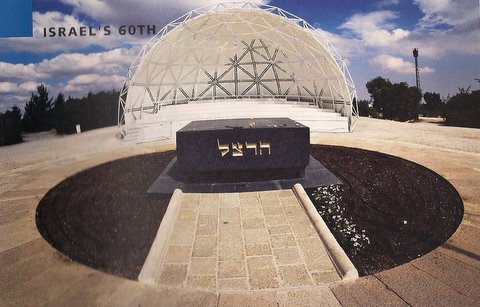
In Arthur Miller's play, "All My Sons", the story is told of an American businessman who deliberately falsifies aircraft building materials and puts at risk the lives of American airmen for the sake of larger profits. In the final scene, in reply to the defendant's pathetic remark that his own sons were not in those planes, a resounding response comes forth from the prosecuting attorney, "They were all our sons".
On the third day of the month of Av, (August 4) this time in Jewish history when dread and angst befell the Jewish people, I had the honor of attending a special tour of the Har Herzl military cemetery in Jerusalem in which our sons sleep, peacefully, surrounded by the hills for which they gave their lives.
As I was traveling to the site, my thoughts and emotions began to churn within me. This would not be a normal field trip, either historically or archaeologically. Visitors would not be dazzled by waterfalls or panoramic vistas, nor would we be awed by ancient coins, ostraca, inscriptions from the Bible.
Even the moving stories of Israel's past would pale in comparison with what we were about to experience. For we were about to transform ourselves from spectators to participants.
All of us knew at least one person who was interred at Har Herzl, which is inhabited by thousands of martyrs. R. Shlomo Zalman Aueirbach, rabbi of Shaare Hesed and rosh yeshiva of Yeshivat Kol Torah in Bayit Vagan, was once asked why he stopped when passing the cemetery to recite Tehillim. He explained that it is customary to recite Psalms at the grave of a zaddik. How much more so near the graves of thousands of zaddikim.
We began by visiting the grave of Yisrael Mir. His resting place set the tone for the entire tour. Yisrael's tombstone is stark and sparsely worded. His has no date or place of birth, no names of parents. Just his age – 23. If Israel had any similar tomb to that of Washington's tomb of the unknown Soldier, this would be it. Yisrael Mir was killed in battle at Latrun soon after getting off the refugee boat from the European Holocaust. He knew no Hebrew and consequently very few people knew him as well; hence, no information about him. He survived the death camps by sheer determination, to come here, his home and to fight for it. He is watched over by the cypress trees which resemble yahrzeit (memorial) candles, and the cedars – as in Arzei Halevanon , the dirge recited on Tisha B'av, which tells the story of the martyrdom of the Assara Harugei Malchut. Fragrant rosemary adorns his grave. Yisrael is, indeed, home.
As we walk towards the nation's great leaders’ plot, where presidents, prime ministers, Knesset speakers, and other prominent leaders like Teddy Kollek are buried, we encounter an area set aside for the memorial and gravesite of the yishuv parachutists to Europe during World War II, Chana Senesh and Chaviva Reich. My memories of Chana Senesh, her poem, "Blessed is the match", her martyrdom, begin to clarify themselves. I was brought up on her valor, along with the likes of Joseph Trumpeldor and others.
The area is designed to look like a parachute or the letter V.
Our guide, Nitai Shiloh, recalls the time he observed another guide at this spot, telling his group that the paratroopers, seven in all, had failed in their mission. They were all captured and executed. Yet, in reality, this is a misrepresentation of the truth. The paratroopers gave the starving, devastated, hopeless and broken – both in body and soul – reason to live, to fight, to escape. Nitai related the following conversation, recorded by the one who had told it to others after the war. He was incarcerated in Dachau, expecting to be killed any day, with no strength or will to resist. Then, in early 1945, a new arrival was brought to the camp – Enzo Sireni, one of the captured paratroopers. The subsequent conversation between the two went as follows:
"Where are you from?”
"From Palestine; from Eretz Yisrael."
“What! I had thought that there were no Jews left anymore anywhere, certainly not in Eretz Yisrael!"
"Yes, yes. We are building and defending the land, and in three years we will have a State."
The inmate, energized by their conversation, took heart, escaped, joined the partisans, and, after the war, made it to Eretz Yisrael.
While these seven brave volunteers failed in their mission to co-ordinate with underground forces in Nazi occupied Europe, they did succeed beyond all expectations in providing inspiration to the doomed Jews. Starved and hunted, Eastern European Jewry had lost all hope. Who would come to their aid? The Israeli (known as "Palestinian" then) fighters, uniformed and armed, showed them that they were not forgotten – that they need not go like sheep to the slaughter. In this regard, the mission of these parachutists who lie here peacefully was, indeed, successful.
The grave of Zohara Liebtov is pointed out to us. A young woman who went to the USA in the late 30s to learn how to fly, she returned after the war and joined the new air arm of the Haganah. She was shot down in 1948 on a mission with the young Ezer Weizman.
We arrive at the plot of the Mivza Kadesh (1956 Sinai Campaign). I see the grave of Yehuda Kandor, a jeep driver. When Israeli forces arrived at the Mitla Pass in Sinai, they did not know where Egyptian postions were. Volunteers were called for to drive slowly towards the enemy positions and draw their fire, in order to pinpoint these positions. Yehuda's hand shot up and he proceeded with his jeep on a suicide mission. Egyptian fire severely wounded Yehuda, and after what seemed to be an almost miraculous recovery, he succumbed to his wounds at Hadassah hospital. But thanks to his astonishing courage we were able to destroy the now Egyptian strongholds he had revealed.
Nearby, we view the graves of Oved Lishansky and Ya'akov Sheferman who did likewise, all during the Sinai Campaign, and Natan Baz, an immigrant from Ethiopia, who did the same at an army base near Kfar Yona and Roi Klein.
A very serious and enlightened discussion now ensues on the nature of heroism :
What are the criteria? Does it always involve a life and death decision? Are these decisions inspired by ideology, faith, love of one's fellow man, a close relative or beloved comrade in arms? Nitai recounts how American President George Bush, while visiting Yad Vashem, said that true heroism is holding on to your faith and ideals when there is horror all around you. The concept of "pikuach nefesh"(saving a life) was also brought up in connection with courage.
We arrive at the area of the First Lebanon War, Shlom Hagalil. We hear the story of the two Yuval Harels. Both Harel families lived in the Jerusalem community of Armon Hanatsiv. Each had a son in the army but neither family knew of the other. During the war, officers arrived at the home of Yuval #1 and brought the devastating news of their son's death in battle. The following day, they return during the shiva with a cataclysmic correction. It was not THEIR son who was killed; it was Yuval #2 . The following day, the same officers arrive, unbelievably, with the bitter news that Yuval #1 had also just been killed. Both boys lie side by side here in the quiet hills of Jerusalem.
Our group, silently and reverently, continues along the manicured rows of graves whilst the sun continues its inexorable rise, and the day becomes yet more physically and emotionally oppressive.
A large memorial greets us at an intersection for the victims of Acts of Terror, from 1860 when Jews left the old city of Jerusalem until the present day – Dr. David and Naava Applebaum, the Gavish family, the kids killed in the massacre at the Harav Center. The list goes on and on. And we remember where we were when we learned of the deaths of these Jews. None of us is spared this agony.
There is a special section devoted to the graves of non-Jewish IDF soldiers who gave their lives for Israel. There is a fresh grave here, from yesterday.
Nearby, we visit the graves of those who were hanged by the British during the Mandate. And the members of NILI , killed in Sinai and Syria during the First World War.
The two Eliyahus, Hakim and Bet Zuri, who assassinated Lord Moyne in Cairo (Lord Moyne refused the Jews-for-trucks deal offered by Eichmann: "What would I do with a million Jews?") were identified by Yitzhak Shamir, their commander in Lechi who had planned the attack – after 35 years in Egyptian graves.
Next, we visit the final resting places of Dr. Moshe Marzuk and Shmuel Azar who attempted to sabotage budding Arab-British cooperation in what came to be known as the Lavon affair. They were hanged in 1954 and returned in a prisoner-exchange after the Yom Kippur war, almost twenty years later.
The group visits the common gravesite of those who were killed in 1948 at Har Adar, defending the approaches to Jerusalem.
We then arrive at the enormous plot of the Kfar Etzion block. It is for these fighters that this har hazikaron (Har Herzl) was originally intended and created: one hundred and fify-one settlers from Kfar Etzion. It is here that the memorial service was held until a larger area – up the hill – became necessary (the main memorial service takes place at 11:00 on yom hazikaron and at 12:00 an additional memorial ceremony takes place here).
The horror of the final day when " Malka " – the code word of Kfar Etzion – fell, sinks in when we stare at the dates on the gravestones. Most of them list the same date: the 4th of Iyar, 5608, when the Gush fell.
Nearby are the graves of the "35", (the Lamed Hey) who were killed trying to bring supply relief to Kfar Etzion. We hear how the sainted Reb Aryeh Levine was able to identify the bodies (which had been mutilated by the Arabs) through a kabalistic practice involving the Holy Torah scriptures.
We pass the watery pools of the monument to the DAKAR, an Israeli submarine which disappeared with all hands on its maiden voyage, lost in 1968 and discovered only recently. Then we pass the gravesites of the 6-Day War dead and the Yom Kippur War dead, before coming to another large memorial. This one is dedicated to the 220,000 (two hundred and twenty thousand!) Jewish soldiers killed in the Red Army's battles against Nazi Germany in WWII. We learn also that another 100,000 Jewish soldiers were killed in armies of the other allied forces (Poland, USA, Britain, France, Canada, Holland...) An equal number of Jewish soldiers were not killed but served honorably, that is, a vast number of Jewish soldiers served with allied armies during WWII, a much higher percentage than their representation in those countries.
We now come to a section of graves of soldiers who fell during the 1990s and since the year 2000. It is covered by a large sukka-type canvas. Here we see the grave of Yossi Goodman who came to Israel as a child with his parents from NYC. He was killed in a practice parachute jump as his commander's chute failed to open and, Yossi, in midflight, was able to free his officer but not himself.
As we continue to hear more heartfelt stories of the lives and deaths of these brave men and women, our tear-filled eyes are not spared the ultimate scene. A frail, middle-aged man approaches the first group of graves in front of our group, bends down and kisses the stone. He then brushes the pebbles and dirt from the stone, sits down and stares. We are all in a state of mourning as we witness this scene.
Menachem Begin insisted upon being buried on Har Hazetim, not Har Herzl but others are buried here:- the father of modern Zionism, Theodor Herzl, Zeev Jabotinsky, Yitzhak Rabin, Golda Meir, Yigal Alon, David Elazar, Yoni Netanyahu, Zalman Shazar – all heros for all seasons and inspirations to all of Am Yisrael.
David Grossman, one of Israel's leading writers, often articulates a leftist philosophy of trusting and taking chances with the Arabs. His son Ori was killed in the Second Lebanon War in 2006 and is buried on Har Herzl. He served in a tank with the son of Chanan Porat, a leader of the settler movement and a former Knesset member. The fathers had debated the issues numerous times over the years. When Chanan came to the shiva, David greeted him with the words, "I was expecting you," and then broke down. Grossman then said to Porat that we are, indeed, all brothers. Maybe we can find a way to love our fellow Jews.
Nitai concluded with a dvar Torah. The martyrs who fell and are buried here have, in their deaths, joined the martyrs of all our people's history who have died al Kiddush Hashem.
After hearing of the lives and sacrifices of our young fighters who devoted their lives to Zion, I am overwhelmed, humbled. In the aftermath of a day I shall always hold to be holy, in the hope of transmitting the essence of what our relationship to the State of Israel is all about, in the realization of our own insignificance in the face of what these wonderful youngsters did for us, I salute them, say Tehillim (Psalms) for them, and vow to them that their sacrifice shall not be in vain. For they are, indeed, all our sons.
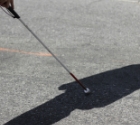 On Going Blind
On Going Blind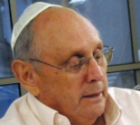 Leyland Goss 1936 – 2008
Leyland Goss 1936 – 2008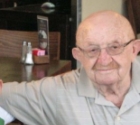 Max Geffen 1924 – 2008
Max Geffen 1924 – 2008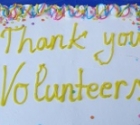 A new website in English - on Volunteering - Launched in Israel
A new website in English - on Volunteering - Launched in Israel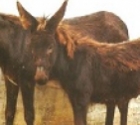 Help Needed for Abused Horses and Donkeys
Help Needed for Abused Horses and Donkeys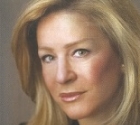 Heather's Heseg
Heather's Heseg